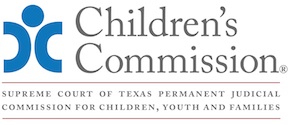
Texas Child Protection Law Bench Book
Updated September 2025
D. Supporting Survivor Parent Safety
Increasing the safety of a domestic violence survivor is inextricably linked to increasing the safety of their children. Courts can support survivor safety by encouraging DFPS to connect the survivor to informed safety and support services, legal services, housing support, and other economic resources. Encouraging this collaboration between the department and the survivor can enhance safety of the children by helping to establish long-term safety and stability.
Below are some suggested questions that judges might consider asking the survivor parent. Please note it is critical to ask these questions outside the presence of the perpetrator.
Questions that Support Safety and Security:[265]
• What support do you need to continue to parent and feel safer?
• What support, services, or resources do you need to continue to run your home while continuing to keep your children safe?
• Do you have access to a car or another mode of transportation?
• Do you have the continued ability or inability to pay rent and buy food?
• What other needs do you have?
• Are you aware if you currently have any active protective orders against the perpetrator or if you have had an active protective order against them in the past?
If the Survivor Parent Has a Substance Use Concern:
• What are the factors in place that contribute to your continued substance use/abuse?
• If so, what factors were in place that supported you staying clean/sober?
• What factors were in place that led to your continued use?
• Has the perpetrator ever disrupted your attempts at sobriety?
• What support do you need on this issue?
If the Survivor Parent Has a Mental Health Concern:
• What are the factors in place that contribute to your mental health challenges?
• Have you ever tried to address your mental health before?
• If so, what factors were in place that supported you feeling well?
• What factors were in place that led you to feeling unwell?
• Has the perpetrator ever disrupted your attempts to care for your mental health and wellness?
• What support do you need on this issue?
Questions that Promote Safety for the Survivor Parent and the Children:
• What are you already doing that is helping to keep you and your children safe?
• How can we support you to continue those protective strategies and actions?
• What additional supports will help you keep yourself and your child safe and together?